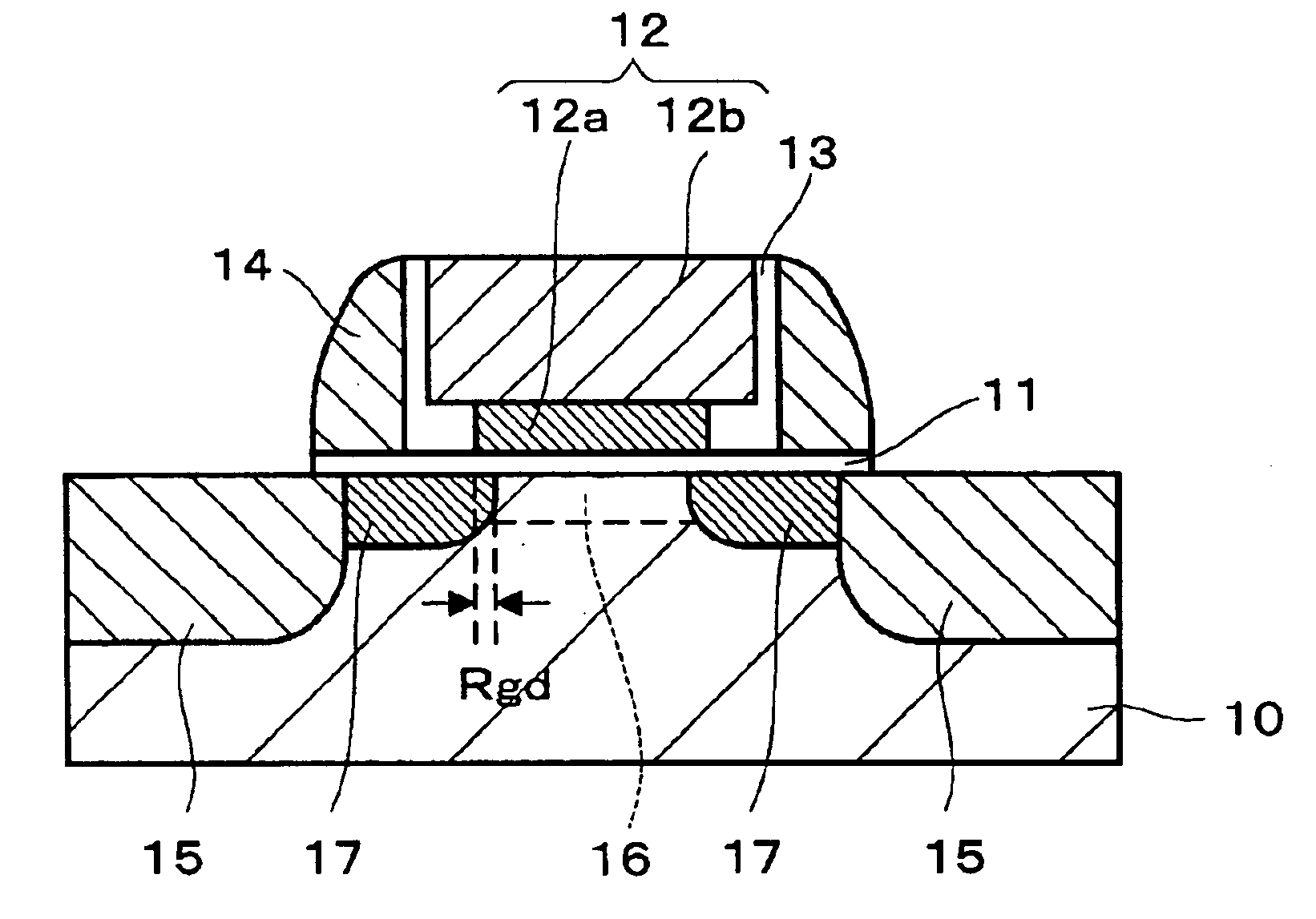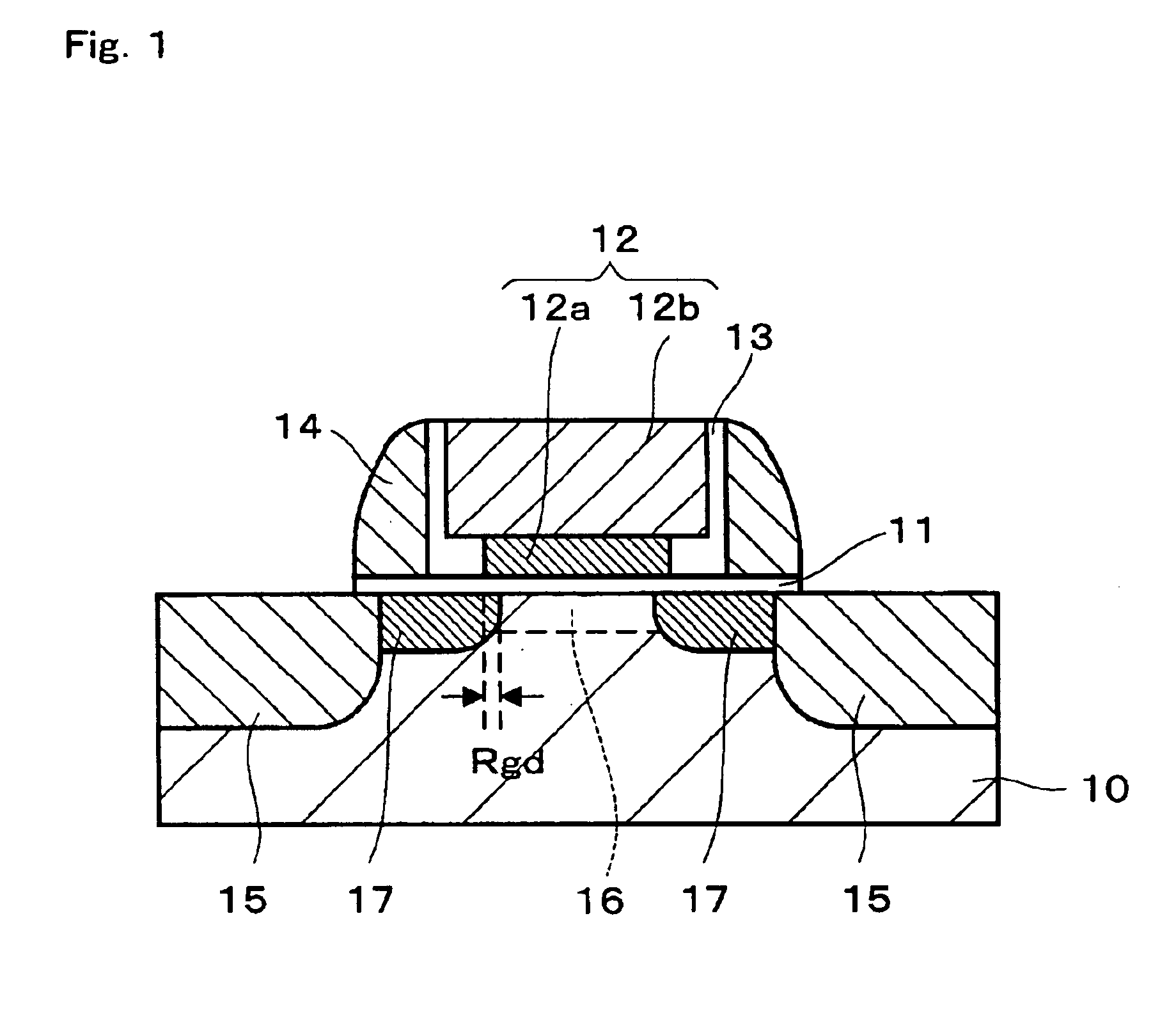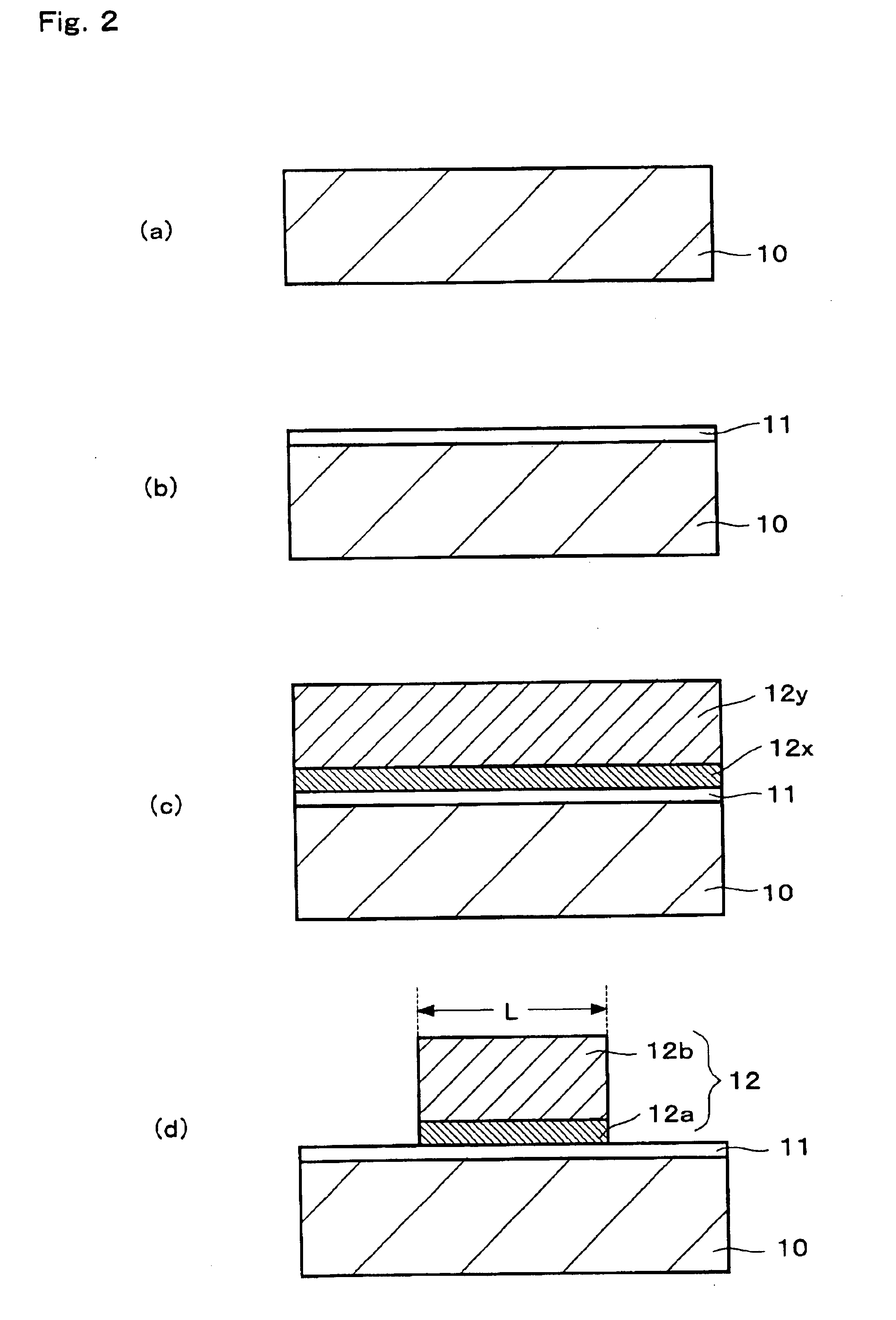Semiconductor device and process for manufacturing the same
a semiconductor and semiconductor technology, applied in the field of semiconductor devices, can solve the problems of complex manufacturing process, significant increase in gate overlap capacitance, and inhibit the improvement of the operating speed of mis transistors
- Summary
- Abstract
- Description
- Claims
- Application Information
AI Technical Summary
Benefits of technology
Problems solved by technology
Method used
Image
Examples
first embodiment
(First Embodiment)
The first embodiment of the present invention will be described below. FIG. 1 is a cross-sectional view of a semiconductor device of the present embodiment.
As illustrated in the figure, this semiconductor device is an MIS transistor, and comprises an Si substrate 10 and a gate electrode 12 formed on the substrate 10 via a gate insulating film 11. The gate insulating film 11 is composed of silicon oxide, and has a thickness of about 2 nm. The gate electrode 12 is composed of a lower gate electrode element 12a formed on the gate insulating film 11 and an upper gate electrode element 12b formed thereon. The lower gate electrode element 12a includes a p-type impurity (e.g., boron) in high concentration, and is composed of polycrystalline SiGe (with a Ge composition ratio of about 50%) with a thickness of about 50 nm. The upper gate electrode element 12b includes a p-type impurity (e.g., boron) in high concentration, and is composed of polycrystalline Si with a thicknes...
second embodiment
(Second Embodiment)
The second embodiment of the present invention will now be described. FIG. 5 is a cross-sectional view of a semiconductor device according to the present embodiment.
The semiconductor device of the present embodiment is identical to that of the first embodiment in terms of the structure of the gate electrode, but is different in terms of the structure of the substrate on which the gate electrode is formed. The equivalent structural elements are therefore provided with the same reference numerals. Also, the detailed explanations for the equivalent elements are omitted.
As illustrated in FIG. 5, in the semiconductor device of the present embodiment, the substrate on which the gate electrode is formed has a structure in which an SiGe film 21 with a thickness of about 15 nm is formed by epitaxial growth on an Si substrate 10, and an Si film 22 with a thickness of about 5 nm is formed thereon by epitaxial growth. A gate electrode 12 is formed on the Si film 22 via a gate...
third embodiment
(Third Embodiment)
The third embodiment of the present invention will now be described. FIG. 10 is a cross-sectional view of a semiconductor device according to the third embodiment of the present invention.
As illustrated in FIG. 10, the semiconductor device of the present embodiment is a CMIS device with a dual-gate structure, and comprises a shallow trench isolation (STI) region, and an n-well 30 and a p-well 50 formed in the two regions separated from each other by the STI region. A p-channel MIS transistor (pMISFET) is provided above the n-well 30, while an n-channel MIS transistor (nMISFET) is provided above the p-well 50.
The pMISFET comprises a gate insulating film 31 formed on the n-well 30 and a gate electrode 32 formed thereon. The gate insulating film 31 is composed of silicon oxide and has a thickness of about 2 nm. The gate electrode 32 is composed of a lower gate electrode element 32a formed on the gate insulating film 31 and an upper gate electrode element 32b formed th...
PUM
 Login to View More
Login to View More Abstract
Description
Claims
Application Information
 Login to View More
Login to View More - R&D
- Intellectual Property
- Life Sciences
- Materials
- Tech Scout
- Unparalleled Data Quality
- Higher Quality Content
- 60% Fewer Hallucinations
Browse by: Latest US Patents, China's latest patents, Technical Efficacy Thesaurus, Application Domain, Technology Topic, Popular Technical Reports.
© 2025 PatSnap. All rights reserved.Legal|Privacy policy|Modern Slavery Act Transparency Statement|Sitemap|About US| Contact US: help@patsnap.com



